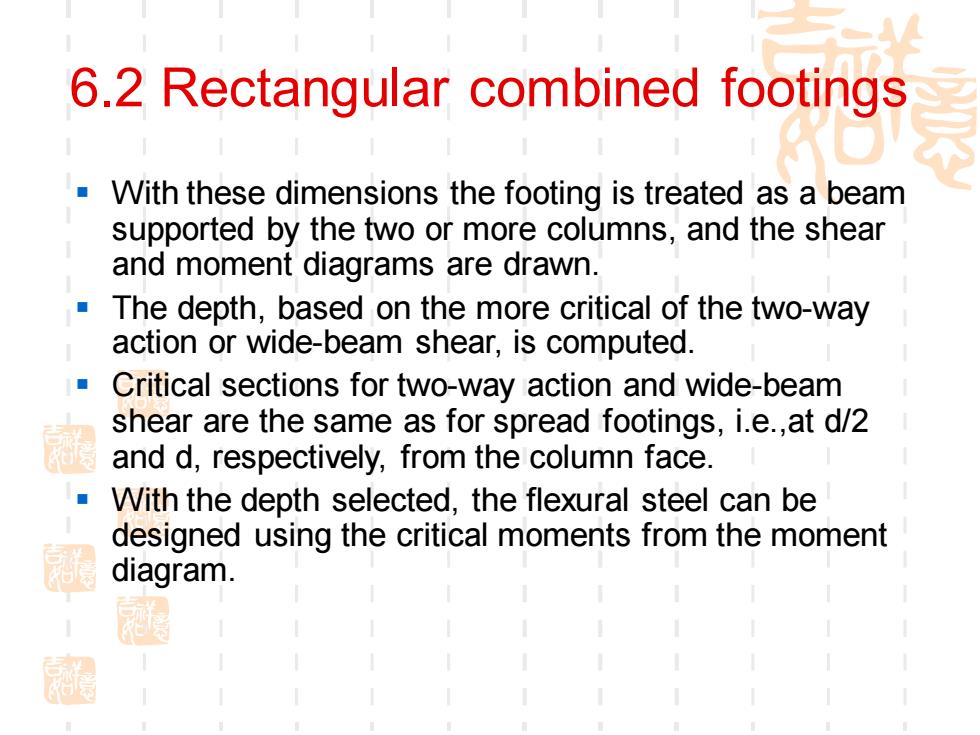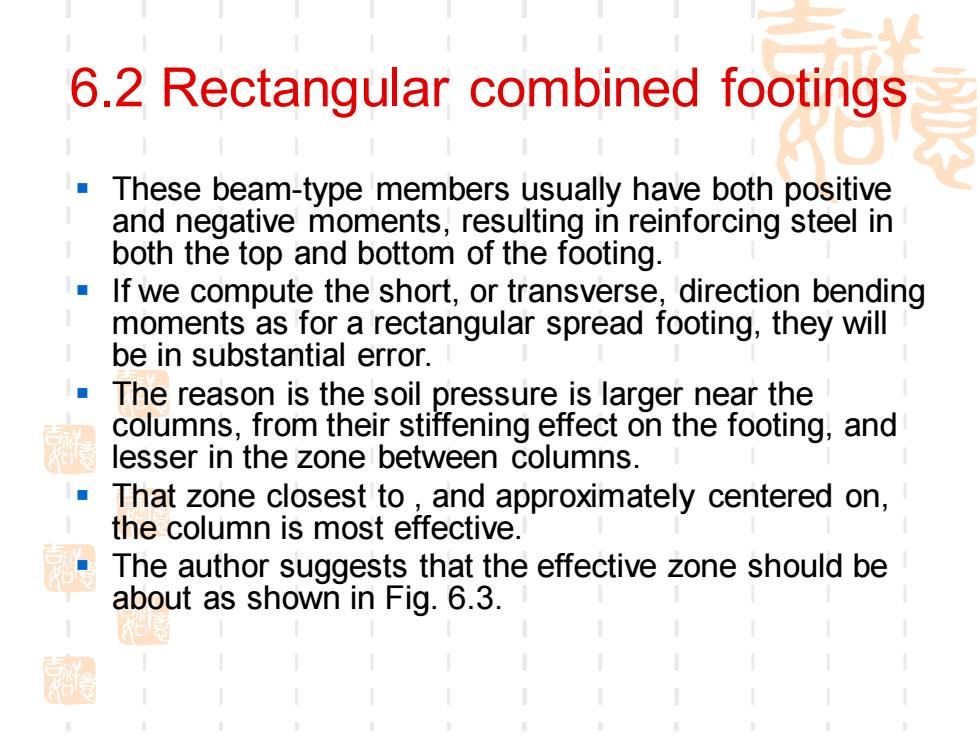
6.2 Rectangular combined footings With these dimensions the footing is treated as a beam supported by the two or more columns,and the shear and moment diagrams are drawn. The depth,based on the more critical of the two-way action or wide-beam shear,is computed. Critical sections for two-way action and wide-beam shear are the same as for spread footings,i.e.,at d/2 and d,respectively,from the column face. With the depth selected,the flexural steel can be designed using the critical moments from the moment diagram. 喝
6.2 Rectangular combined footings ▪ With these dimensions the footing is treated as a beam supported by the two or more columns, and the shear and moment diagrams are drawn. ▪ The depth, based on the more critical of the two-way action or wide-beam shear, is computed. ▪ Critical sections for two-way action and wide-beam shear are the same as for spread footings, i.e.,at d/2 and d, respectively, from the column face. ▪ With the depth selected, the flexural steel can be designed using the critical moments from the moment diagram

6.2 Rectangular combined footings These beam-type members usually have both positive and negative moments,resulting in reinforcing steel in both the top and bottom of the footing. If we compute the short,or transverse,direction bending moments as for a rectangular spread footing,they will be in substantial error. ■ The reason is the soil pressure is larger near the columns,from their stiffening effect on the footing,and lesser in the zone between columns. That zone closest to and approximately centered on, the column is most effective. The author suggests that the effective zone should be about as shown in Fig.6.3
6.2 Rectangular combined footings ▪ These beam-type members usually have both positive and negative moments, resulting in reinforcing steel in both the top and bottom of the footing. ▪ If we compute the short, or transverse, direction bending moments as for a rectangular spread footing, they will be in substantial error. ▪ The reason is the soil pressure is larger near the columns, from their stiffening effect on the footing, and lesser in the zone between columns. ▪ That zone closest to , and approximately centered on, the column is most effective. ▪ The author suggests that the effective zone should be about as shown in Fig. 6.3